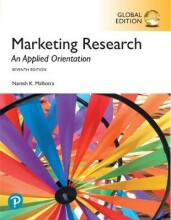Summary: How To Handle A Living Constitution? | Hans Nieuwenhuis
- This + 400k other summaries
- A unique study and practice tool
- Never study anything twice again
- Get the grades you hope for
- 100% sure, 100% understanding
Read the summary and the most important questions on How to Handle a Living Constitution? | Hans Nieuwenhuis
-
1 A Humanist Creed
-
What would be the answer if Scalia would ask: what's the guiding principle for an evolutionary interpretation of human rights in Europe?
Human dignity.
-
Why is human dignity a confrontational concept?
For example: embryo's. Some people strongly argue against it because they are convinced that human dignity demands absolute respect for the human embryo. Others will say that allowing a child to suffer, when it could be cured with the help of some stem cells taken from the umbilical cord of a brother or sister expressly created for this purpose, truly violates human dignity.
-
Why is human dignity a evolutionary concept?
Ideas on what human dignity demands, once advocated by a minority, can grow into the opinion of the majority.
-
How to handle a living constitution?
One way would be to kill it, mummify it and keep it in its pristine condition. The other way is to heed the teaching of St. Paul: The letter kills, the Spirit gives life.
-
2 A Translantic View
This is a preview. There are 1 more flashcards available for chapter 2
Show more cards here -
Give an example, European and American, in which it is fruitful to call the law a living instrument.
Holmes: In 1919 a US Supreme court justice. 'The life of the law has not been logic, it has been experience'. The case before us must be considered in the ligth of our whole experience and not merely in that of what was said a hundred years ago.
German example: 'The law grows with a people, develops with it and dies when this particular people loses its identity (Savigny). The nation's Volksgeist, a concept Friedrich Carl von Savigny borrowed from Hegel, is the main source from which the law takes its course.
-
Why does law lead a double life?
On the one hand the law is still part of the general life of the people. On the other hand the law from now on also belongs to the province of academically trained specialists. Savigny calls these two aspects respectively the 'political' and the 'technical element' of the law.
-
Why is the distinction between the technical and the political element of the law still important?
Because the interpretation of human rights definitely belongs to the political element. Interpreting the meaning of 'everyone's right to life' is not a bilateral affair between the legislature and the court, but a tripartite scenario which includes a very important role for the persons for whom human rights are meant: human beings.
-
In what way did the meaning of the words 'respect for family life' change over time?
At a semantic level the meaning of the words 'respect' and 'family life' did not change. What changed is the idea of what it means to respect family life. Stigmatising children born out of wedlock as 'illegitimate' was considered to be the best way to stimulate the respect for this traditional brand of family life. The same is true for 'everyone's right to life'. De lexial meaning of the word 'life' is still the same. However, a revolution has taken place in the technique of creating human life.
-
3 Evolutionary Interpretation; A Slippery Slope?
-
Does an embryo have a right to life?
Vo v. France --> The Court notes that the embryo is beginning to receive some protection in the light of scientific progress and the potential consequences of research into genetic engineering, medically assisted procreation or embryo experimentation. The embryo's capacity to become a person requires protection in the name of human dignity, without making it a 'person' with the 'right to life' for the purposes of article 2. At the present stage of development of the law and morals in Europe the unborn child does not enjoy a right to life protected by art. 2.
-
Which distinctions can be made in the originalism of Scalia?
A distinctino can be made between two separate activities: determining the meaning of the wording of a legal instrument and applying that meaning to the case at hand.
- Higher grades + faster learning
- Never study anything twice
- 100% sure, 100% understanding
































